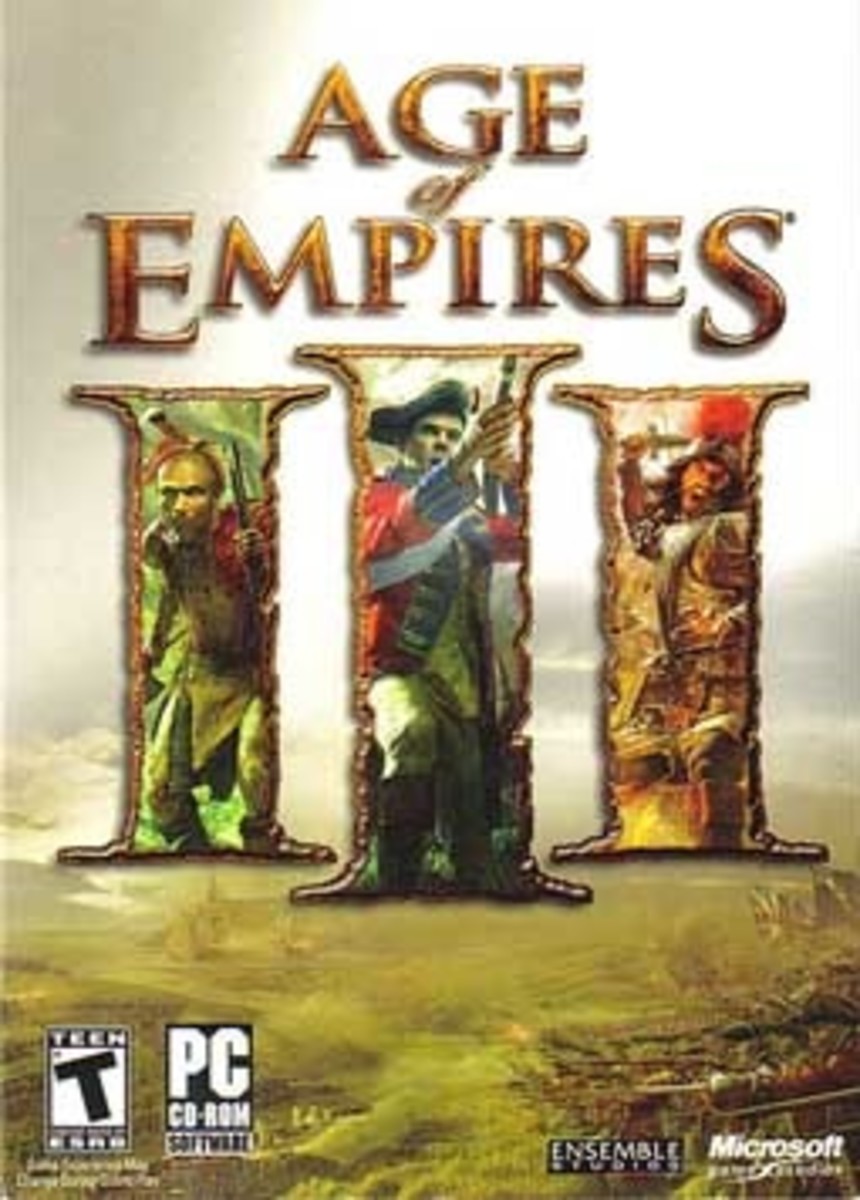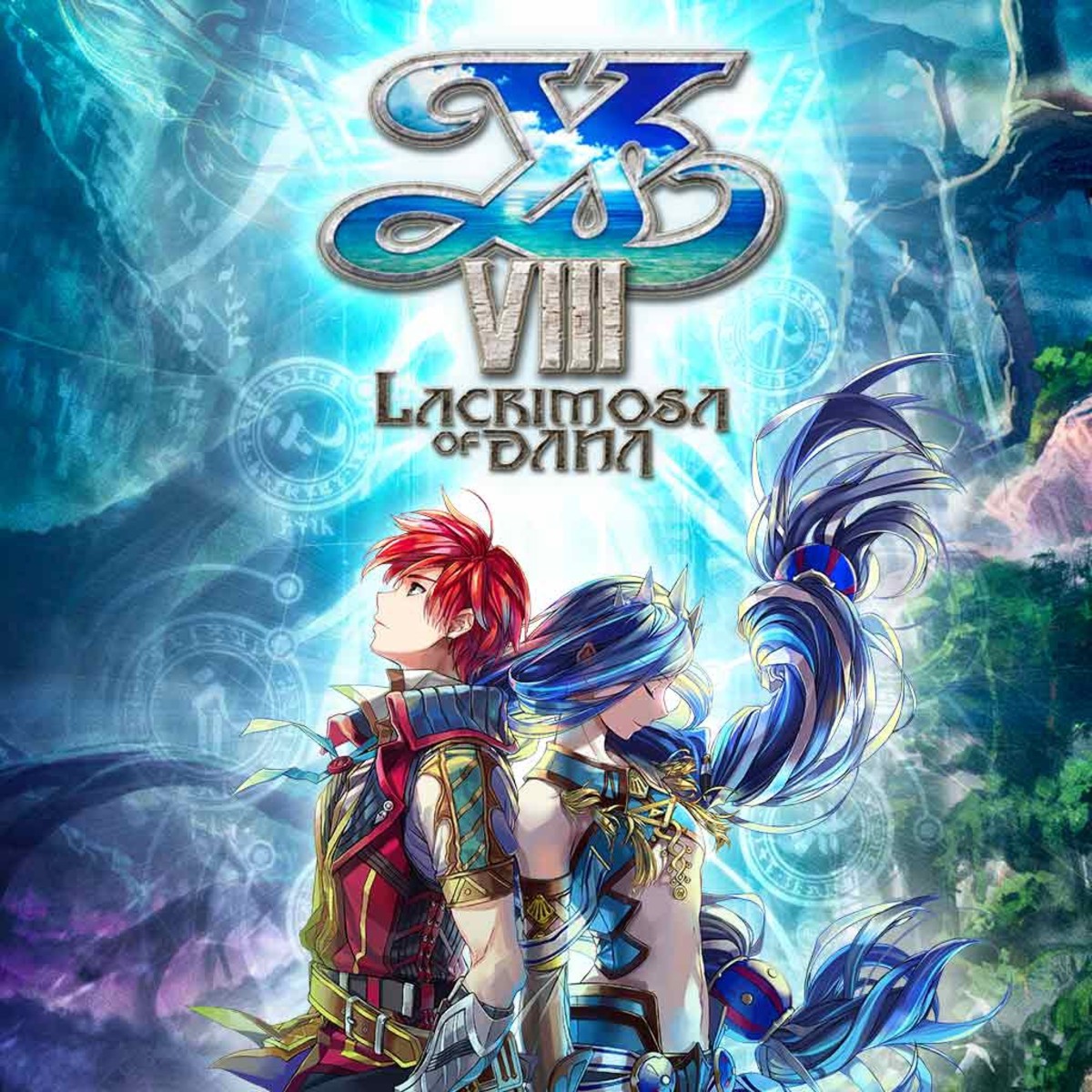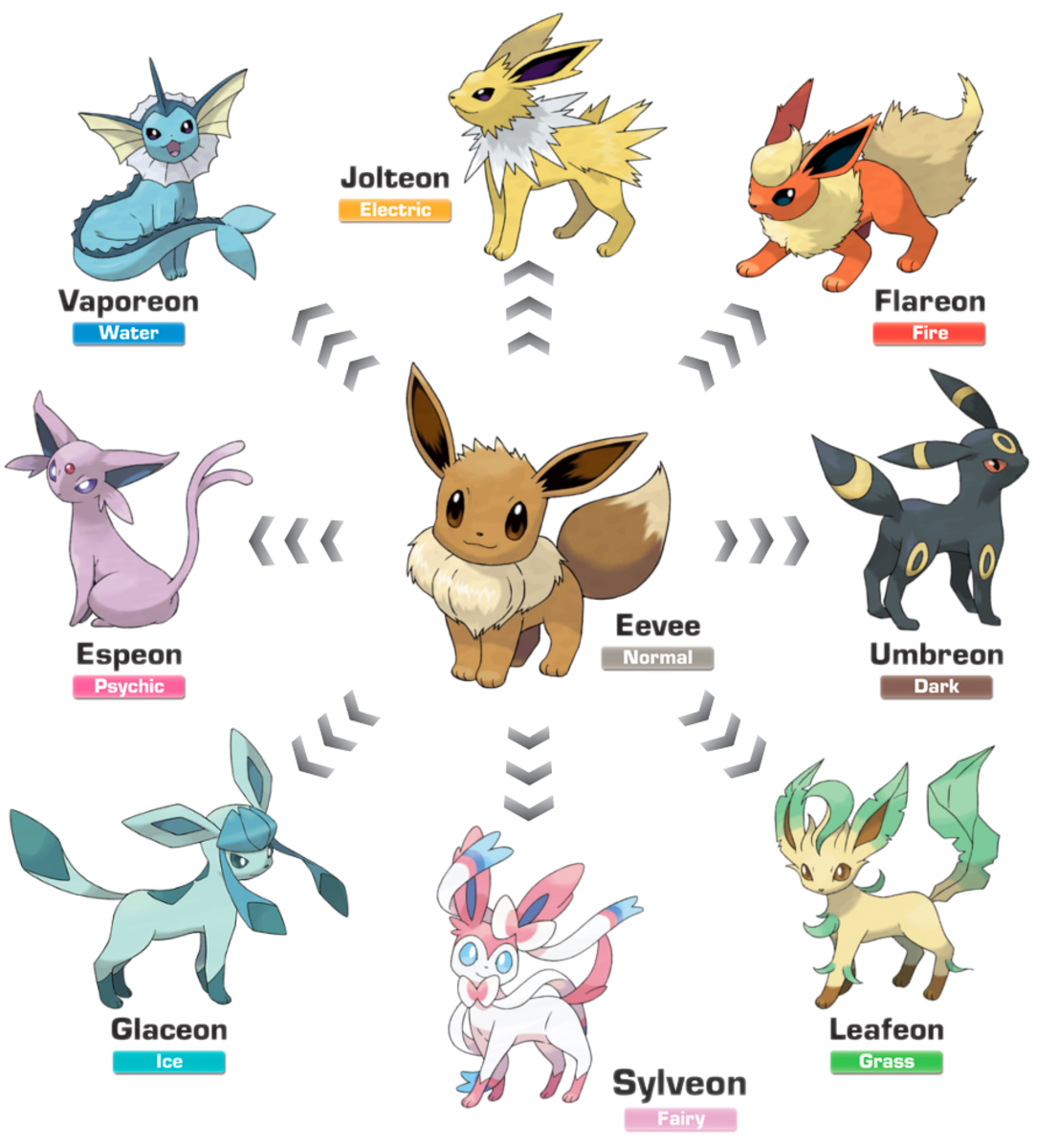- HubPages»
- Games, Toys, and Hobbies»
- Computer & Video Games»
- Roleplaying Video Games
Soul Sacrifice Review
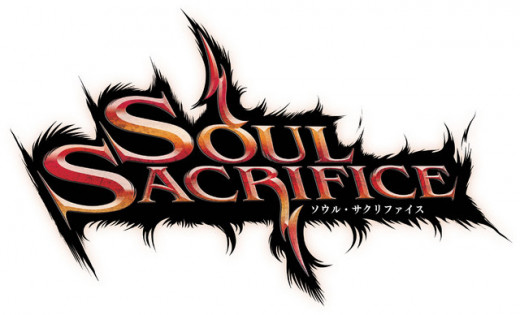
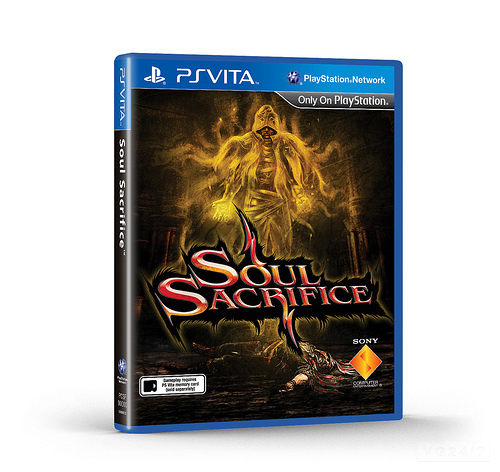
What is Soul Sacrifice?
Produced by Marvelous AQL and Japan Studio and published by Sony Computer Entertainment, “Soul Sacrifice” is an action role playing game (Action RPG) released exclusively for the Playstation Vita on March 7 in Japan, April 30 in North America and May 1 in Europe. Conceptualized by Kenji Inafune(the designer of the tremendously popular “Megaman”), It centers on fighting monsters either alone or as a group, and implements an intriguing idea to the mix: the ability to “sacrifice” numerous objects, body parts and even people to achieve your goal.
Librom

The Plot
The plot of Soul Sacrifice centers around an individual trapped in a cage waiting to be killed. In order to escape, as well as discern the reasons behind his or her capture, he or she must learn magic from a talking book called “Librom,” a charismatic living being whom guides the player through the story, in their bid to gain power and ultimately escape.
Librom's Pages

The story of “Soul Sacrifice” may be the most impressive aspect. The entire story is presented through the pages of Librom in a smooth excellently crafted book interface. Everything from missions to equipment is presented as a page within the book, to be read using the PS Vita’s buttons or the front touch screen. Even the actual plot is presented almost entirely through words and voice acting, portrayed as dancing words on a page accompanied frequently by animations, drawings and sound effects to keep thing fresh. The sensation of reading a magical living tome is incredibly immersive, and really evokes a sense of wonder as one skips through Librom’s magical pages to learn more about this strange, mystical world.
Indeed, and what a world it is.
The Lore Pages of Soul Sacrifice
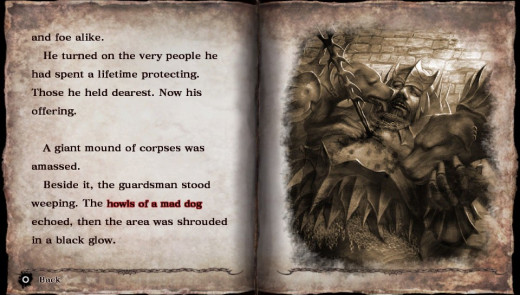
“Soul Sacrifice’s” world building is phenomenal. Not only do players learn about this strange place through plot, but an extensive “Lore” section provides information on nearly every monster and place with startling fluidity and depth. These are well written and are incredibly enjoyable to read. They can also be accessed before each mission, giving context and valuable knowledge about the monster, place and task the player is about to face, ranging from the history of the beasts to their weaknesses and abilities, all woven brilliantly into a cohesive and brief story or fable. Be warned however, “Soul Sacrifice’s” world is rather bleak, and happy endings are few and far between.
That is not to say the narrative is without flaws. Due to the lack of many cut scenes, the presentation, however pretty and intriguing, can become monotonous, and seem to drag on. The voice acting also seems to move rather slowly, perhaps for emphasis and mood, but despite how well done it is, players may often find themselves simply reading the text and skipping the voice acting all together, which is a handy option utilized by simply pressing the “X” button.
Soul Sacrifice's Characters Tend to be Very Interesting

However, the narrative’s problems are not only in presentation. “Soul Sacrifice” tells an epic story of a few select characters, and in that respect is quite intriguing. However, the issue has to do with the flow of the narrative. Due to how the narrative is presented, much of the overarching story is skipped, giving only the bare plot. This leads to some jarring transitions as scenes jump entire years and creates a sense of distance from the characters as they chase their goals. This makes it is difficult to determine how the characters fit into the world on a whole much of the time. As a result, when the stakes are anything but personal to these characters, the tension falls flat, as the player has little concept of the world they live in, outside of journal entries and historical records read in the “Lore” section. Luckily, despite this, the characters in “Soul Sacrifice” are well done and interesting, and though are not all developed very well, they do a good job at garnering the player’s affections and leaving a lasting impression.
Laser Eyes are the Solution to All of Life's Problems
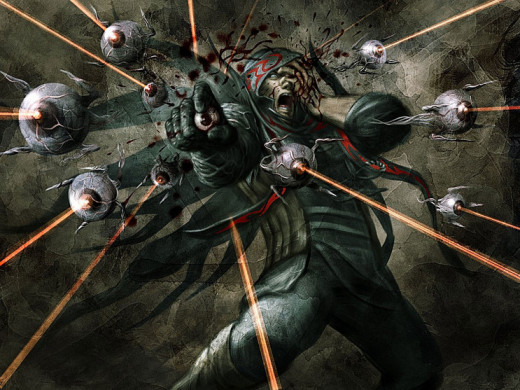
Gameplay
Gameplay in “Soul Sacrifice” occurs by entering specific pages inside Librom to fight a monster called an "Archfiend" or complete some other objective. The world inside Librom’s pages is a dangerous place. In order to survive, the player must use their wits and strength, but if all else fails, they can always rip an eye out and use it to summon a dozen laser shooting eyeballs. Indeed, “Soul Sacrifice’s” gameplay is often as bleak and harrowing as the story, though it provides a more satisfying experience. The dynamic is centred around cost. Everything in “Soul Sacrifice” costs something, from attacking to healing, and in order to obtain it, that cost must be paid, in other words, something must be sacrificed. This manifests itself in the form of offerings, black rites and companion sacrificing.
Offerings
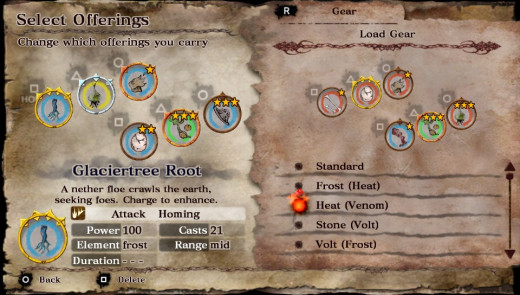
- “Offerings” are the abilities or spells players bring into a fight. They are called “offerings” because the player sacrifices a piece of them to use an ability. For example, an “Ice Rose Thorn” offering may be sacrificed to create several ice spears that the player throws at the enemy. Each offering has a set amount of uses, and unless they are replenished, they will eventually break and become unusable for the rest of the fight. Offerings can be replenished through sacrificing smaller monsters, called “foul creatures,” mid battle, or through activating various parts of the environment. There are hundreds of offerings in the game, with many repeating as stronger versions of themselves, but the variety is quite large regardless.
Black Rite Infernus
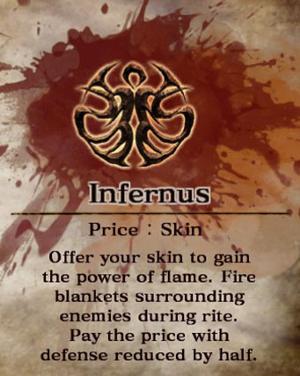
- “Black Rites” are ultimate spells which are can be activated after a player has lost a certain amount of heath. They are incredibly dangerous and necessitate the sacrifice of a particular body part. These can only be activated once per battle, and come with a hefty cost. For example, the Black Rite “Infernus” sacrifices the player’s skin to deal heavy fire damage to all enemies on the field. The resulting price will result in the player’s defence being halved until the cost is lifted using the game’s currency, “Lacrima.” These add a great level of tension and power to the game, expanding on the theme of sacrificing in an interesting way.
- Companion sacrificing is the act of sacrificing a fallen companion to activate a “Sacrifice Spell” which will kill the companion, but deal heavy damage to all enemies. Alternatively, a player can “Save” a fallen ally to bring them back into the fight.
Will you Save? Or Sacrifice?
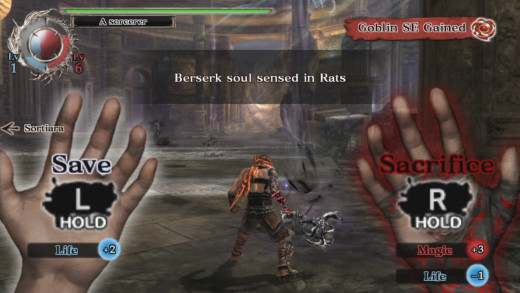
Soul Sacrifice's Take on the Harpy is Both Grotesque and Intriguing

The dynamic between choosing to unleash a powerful spell at the cost of having one less ally, or sacrificing one’s own health to keep another person in the fight is one of “Soul Sacrifice’s” biggest strengths, and when faced with the game’s multitude of horrific giant monsters (based on famous mythological creatures but with interesting and intriguing twists), players will find that making tough decisions is not just a part of “Soul Sacrifice’s” gameplay, it is the game’s core. Do I sacrifice my teammate to launch a powerful spell? Or do I give them half of my health to keep them in the fight to better survival odds? The split second choices are what make “Soul Sacrifice” so unique, and can really turn a simple fight into a gut wrenching exercise in choice and consequence.
Lacrima
As mentioned before, “Lacrima” is the magic currency that can help you fix your mistakes, but is only awarded after missions by Librom. This curious currency covers the cost of breaking offerings, paying the “cost” of the Black Rites, reviving dead computer controlled companions outside of battle and even changing the player’s name. Don’t be lulled into a sense of security however, as the cost of fixing mistakes such as breaking offerings and reviving dead companions rises significantly each time this is done, making careful consideration and planning imperative. That being said, it is easy to simply play numerous easier missions and accrue large amounts of Lacrima, which can mitigate the sting the choice and consequence gameplay significantly.
level Icon: Blue indicates "Life" Level, Red indicates "Magic" Level
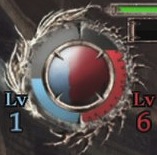
Levelling, "Soul Levels" and "Sigils"
“Soul Sacrifice” is, at its heart an RPG, and as such RPG staples such as a level system do exist. However, levelling up in “Soul Sacrifice” is a little different. There are two levels, called "Soul levels,” a player can raise: their “Life level” and their “Magic level.” Life levels are raised by saving monsters and companions, and Magic levels are raised by sacrificing them. Building up Magic levels grants higher attack, while building Life levels grants higher defence, meaning players are forced to decide what is most important to them, as there are only 100 levels total. This means a player will have to choose to build their character primarily toward having a higher attack and lower defence, higher defence and lower attack, or neutral (maintaining a balance between the two). Since every monster is actually a human to be saved or sacrificed, where saving them allows you to bring them along with you on missions while sacrificing them kills them on the spot, choosing to save or sacrifice is a careful decision which has real consequences for your gameplay experience.
Outside of levels, players can also equip “Sigils” to their arms. A Sigil is a symbol which grants certain effects in battle. Sigils are unlocked by saving or sacrificing monsters, and depending on how one builds their character, extra effects can be unlocked. Again this adds a level of consequence to the game, as to unlock certain sigils some monsters must be saved or sacrificed.
Online Lobbies are Easy to get into and Simple to Navigate
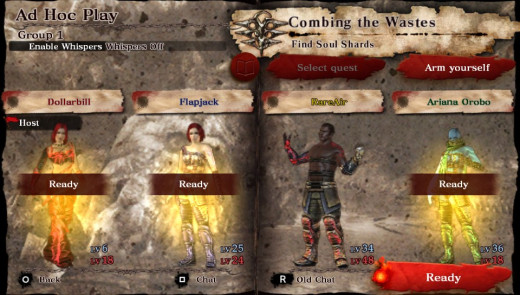
Online Mode
Though “Soul Sacrifice” can be played alone, it also boasts a robust online mode which allows players to undertake missions together in groups of up to four. It also supports local ad hoc gameplay over wifi. Matchmaking is quick and easy, with the ability to quick join a match, create one’s own room (which can be password protected), or invite friends to play together. Gameplay is identical to the offline mode, with the exception that bosses become harder depending on how many people are playing and only the “Avalon Pact” missions can be undertaken. This is where “Soul Sacrifice” is most enjoyable, and is likely where most players will spend most of their time.
Negatives
On the negative side of things, “Soul Sacrifice” is a boss rush game at heart, and as such can become very repetitive as players fight the same Archfiends over and over again at different difficulties. For many this is expected and welcome, but for others it might be a turn off. Similarly, because of how difficult fights can often become, especially when playing alone, grinding (repeatedly fighting monsters to gain levels and items) may become necessary to proceed, which may turn many players off.
Another issue with playing offline is the AI companions. These companions are woefully inept, and will often get in the way more often than not, and since some teammate's spells can actually hit (though not harm) players, constant explosives from teammates knocking back the player without regard can be a big issue. Customization is also lacking in some respects, most notably the costumes. Though there are many costumes to select from, they can often be hit or miss, and their pallet swaps leave much to be desired.
Also, the “Avalon Pacts” Side quests where much of the content lies is challenging and fun, but very repetitive. This becomes especially apparent when players are given brief letters or pages from family members or friends of the monsters they are about to fight. These paragraphs are repeated ad nauseum across many of the side quests and feel lazy. Even worse, they remind the player just how repetitive the game really is. Simply writing different letters or paragraphs for each of these monsters would have alleviated this tremendously.
Finally, there is not much enemy variety in the game, especially among smaller monsters. There are many Archfiends, but because of the large amount of missions, they are repeated quite frequently. That being said, there is free downloadable content currently out with more upcoming which adds more Archfiends, levels, missions and even Black Rites to the game. All are available on the Playstation Store and each takes up less than 200 kilobytes.
The Music Of Soul Sacrifice - Yasunori Mitsuda
The Music of Soul Sacrifice - Wataru Hokoyama
The Excellent Music
Special mention must be made of the music in “Soul Sacrifice.” It is simply amazing. Every song, every chord every beat is exemplary, and stands as one of the best videogame soundtracks to date. Composed by Skywalker Sound and Yasunori Mitsuda (composer of the soundtracks of Chrono Trigger and Xenoblade, among others) as well as Wataru Hokoyama (composer of the soundtracks of Afrika and Resident Evil 5), “Soul Sacrifice’s” soundtrack helps to elevate what was already an epic and magical adventure to even greater heights. Each song seems to fit neatly with what is being done, and even changes as you skip Librom’s pages, fading in and out to supply more appropriate melodies to whatever is happening on the page. It is simply sublime, and can turn even a mundane bossfight into a pulse pounding event.
Conclusion
“Soul Sacrifice” is deep, rewarding, engaging and most importantly fun. Though the repetitive nature of the game cannot be overlooked, and the terrible AI can be infuriating, the brilliantly horrible world that is crafted by “Soul Sacrifice’s” lore and the strong counterbalance between sacrifice and salvation help to give it an identity all its own. Not to mention the mission-based system is great for gaming on the go, a must for a portable system. It must be said that this is not a game for everybody, but if you feel prepared to enter the oppressive and harsh world of monsters and magic that is “Soul Sacrifice,” prepare to sacrifice loads of your free time to what is sure to be a satisfying, if bleak, experience.


